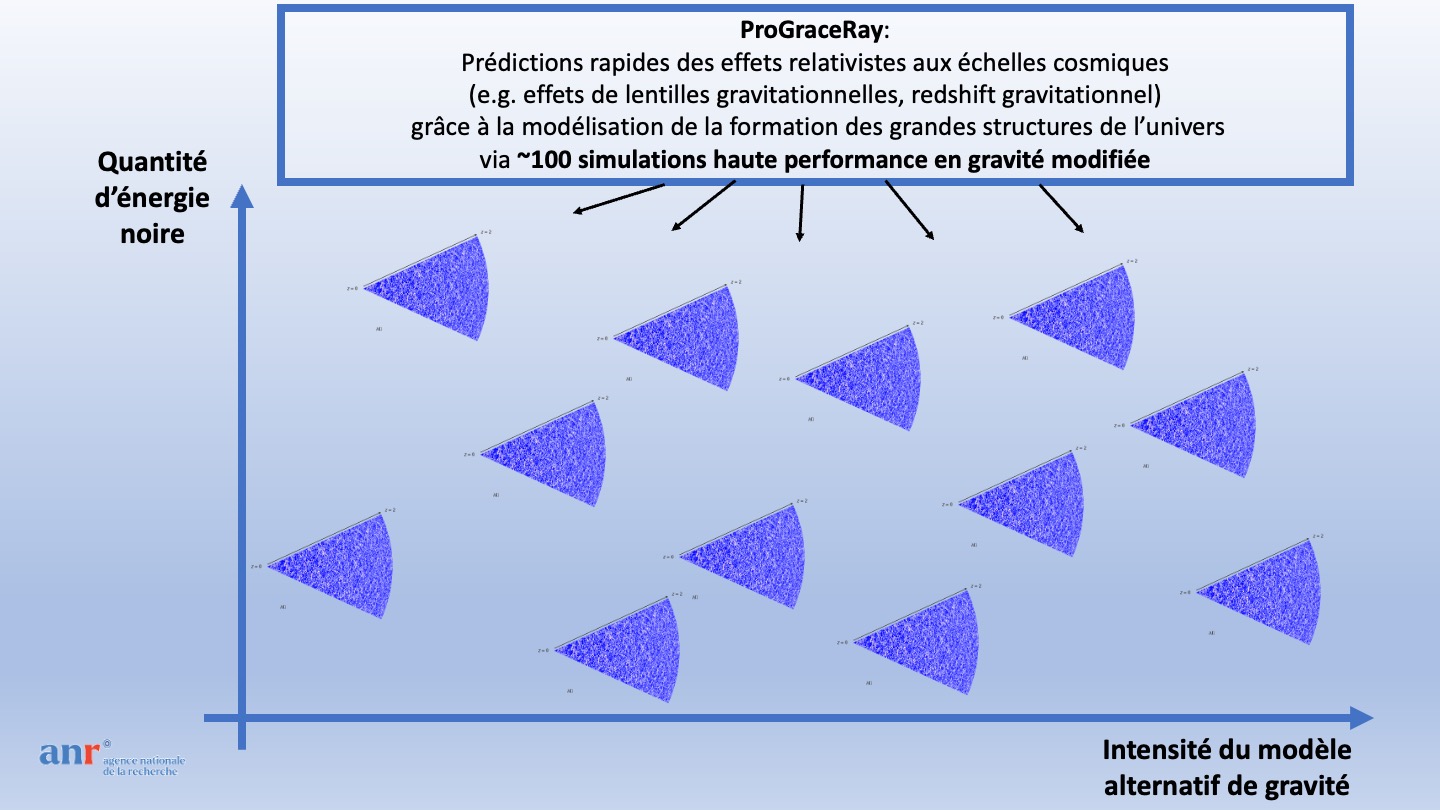...

ANR ProGraceRay
Probing Gravity on Cosmological Scales through Relativistic Ray Tracing
The nature of dark energy is a central question in modern cosmology. The goal of the ProGraceRay project is to develop robust probes of gravity on cosmological scales, taking into account the impact of relativistic physics of light on the apparent distribution of matter. Indeed, photons do not travel in straight lines. Therefore, the angular positions, shapes, sizes, and luminosities of sources are altered by weak gravitational lensing (WL) effects. Similarly, the radial position of galaxies inferred from their redshift is perturbed, which changes the apparent distribution of galaxies (redshift-space distortions or RSD). These effects carry cosmological information : the metric along the line of sight (WL) and the velocities/potentials of the sources (RSD). Current studies rely on numerous approximations, yet relativistic effects can contribute up to 100% on the dipole of the galaxy cross-correlation function, 1 to 50% on correlations between density and shear, and a few percent for standard WL and RSD analyses.
In the context of modified gravity (MG) theories, combining WL and RSD is essential to extract both potentials of the metric. Therefore, we propose to carry out the largest N-body simulation suite in the world of structure formation with MG using the RAMSES code. Advanced ray-tracing techniques will be used to generate synthetic galaxy catalogs. We will study the impact of relativistic effects and MG on the 1, 2, and 3-point statistics of galaxy distributions, as well as those of convergence and shear. By combining analytical models and emulators, we will provide precise predictions of these quantities to constrain the nature of dark energy and gravity using upcoming surveys (DESI, Euclid, LSST, and SKA).

